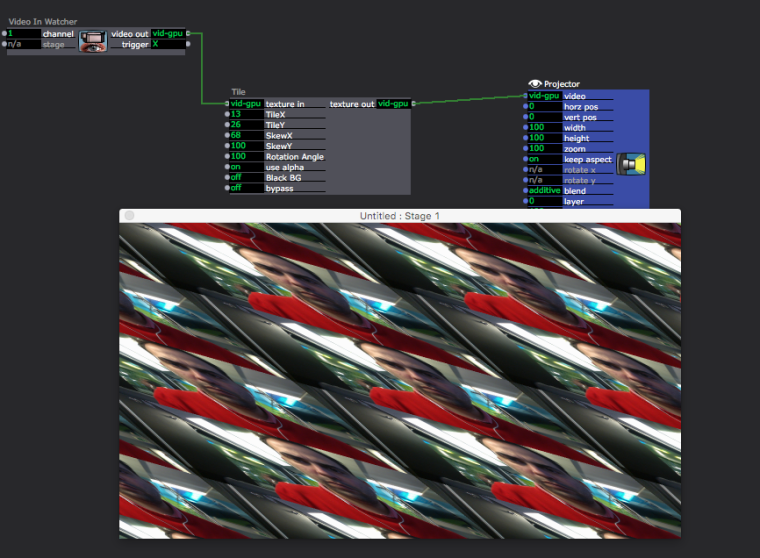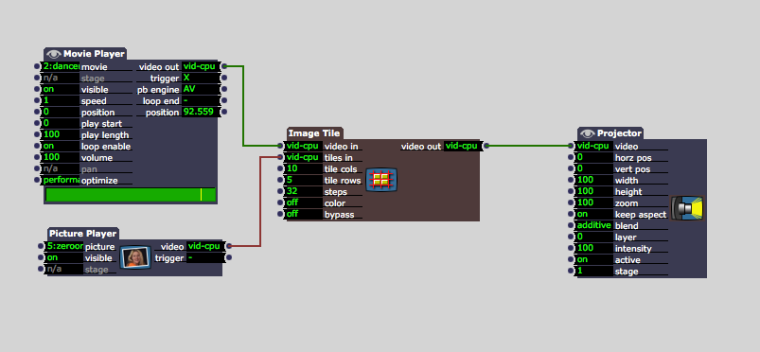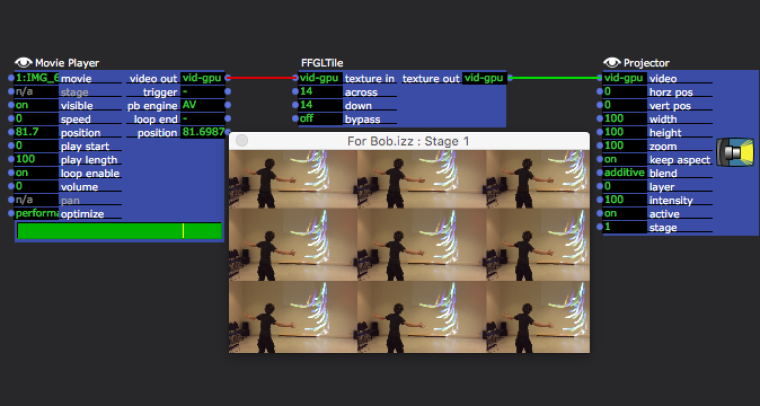Image Tile plugin effect
-
A gpu version would surely perform better.
There maybe glsl shaders available that provide the same/similar effect.
Otherwise there are 'tile' freeframe gl effects available online with a little searching.
Have you installed the Troikatronix freeframe bundle? I'm not sure if tile is included there but It may be.
-
-
I found a GPU Tile effect. Is it not part of 2.5?

-
Its part of the freeframe bundle that you have to download separately.
-
@crystalhorizon said:
I found a GPU Tile effect. Is it not part of 2.5?

@Michel, but @crystalhorizon looks to be right. His Image Tile actor is GPU based, but isn't named "FFGLTile". Weird. I couldn't find that.
-
@Woland
His effect is a FreeframeGL actor, just not one included with Isadora. -
-
thanks for the replies-just getting back to this.....yes I have the freeframe bundle but I did not see anything that would allow for a similar type of effect (i.e.: with a "video in" input and a "tiles in" input)
In the example shown below, the dancer video is "tiled/superimposed" with an image of a "01"
Here is an update of the old 1.x example files--again, this still works as shown below but I do not think this actor is being updated any longer so I am trying to find alternatives/etc:


I am going to play around a bit more with the freeframe effects but they all seem to only tile the original source video/image as demonstrated by Woland
thanks again for any help or possible ideas/solutions to test out.
-
Dear @crosas,
A GPU version would be quite difficult if not impossible. The way this plugin works is as follows:
- Break the second input into a grid
- Analyze the brightness of each grid point
- Sort these "blocks" in ascending brightness order
- Break the first input into a grid
- Replace blocks from the first input with blocks from the second input that have a similar brightness.
These particular operations – the sort especially – are not easy (maybe even not possible) in shader code because it operates on all pixels of the image "at once." There's no clear way to iterate over a range of pixels as you can do easily on the CPU. Certainly the sorting of the blocks would be simply impossible.
Admittedly, I am not the best shader programmer in the world. But I really am not sure how one would do this, especially if analyzing on the fly. I searched some examples for ASCII Art Shaders on the web, since this is the classic use what this plugin does. But all of them rely on a) knowing the brightness of the input blocks in advance, b) have a fixed size for the blocks. (For instance, here.)
So I really don't know if a GPU solution is feasible.
Best Wishes,
Mark -
Hi mark, thanks so much for getting back and clarifying on how this plugin works-seems to confirm/breakdown what I thought was happening (I gave this a go with jitter a ways back but never quite got it resolved there) Bummer that gpu may not be feasible and as I am not adept at shader programming I will need to continue to rely on the classic cpu version for now unless anyone else has ideas/alternative solutions to test out.
best
//c
